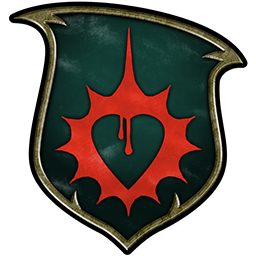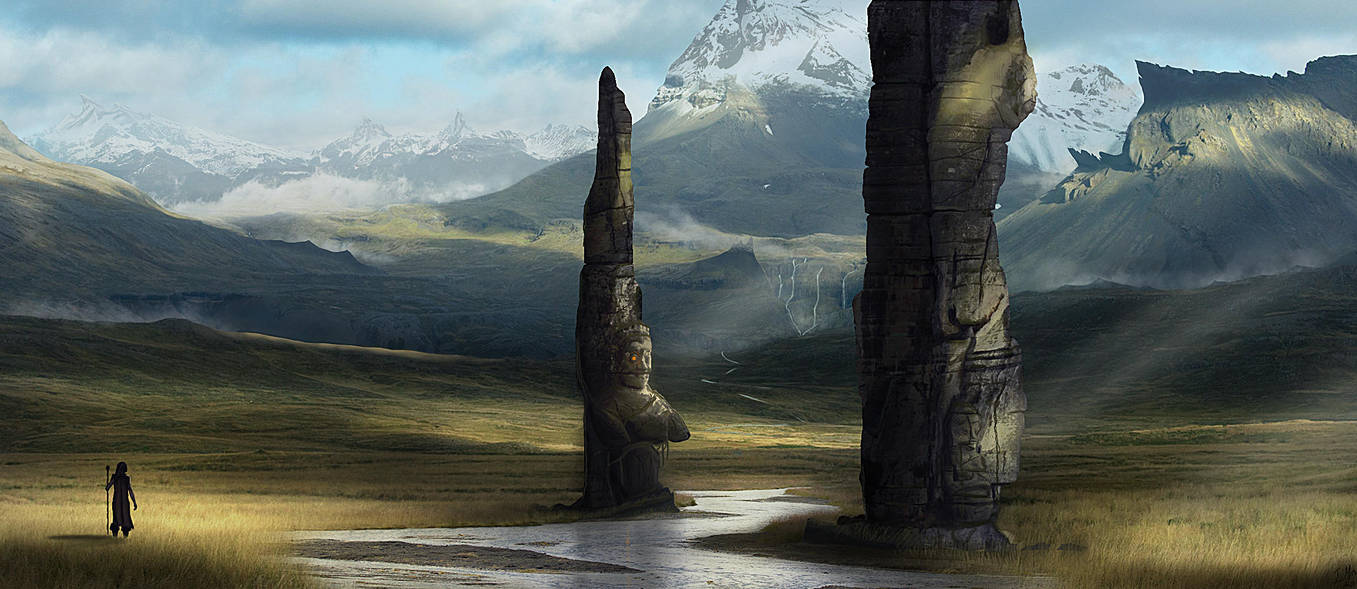Calead
Structure
History
During the First Ruination, the Three Cities of Calead sent armies and goods to help the Elves defeat the Horde Orcs, even after Tanos was sacked and pillaged. After the war, the Three Cities remained relatively peaceful through the Age of Founding and well into the second millenium, establishing the Koemfer Halfling-dominated Laffing Hills as a protectorate country and the city of Orusal along the Scythe Coast. However, with the establishment of the Voran Church and the rule of the ambitious Priestkings, tolerant and decentralized Calead became the target of the Voran Empire’s expansionism and was besieged from the Ashlands of Urda during what is known as the Caleaden Crusades of 1770-1777. Although the Caleadens fought valiantly, they were overwhelmed by the Knights of Nethereth--leading Hobgoblin, Ogre, Orc and Human slave armies from Koth and Eshia numbering in the hundreds of thousands--and eventually annexed in 1777. The final battle became infamous as the Destruction of Cir, when the Priestking Kairic the Cruel designated the City of Temples as heretical and utterly devastated the entire city and population. The Magewives of the Knights of Nethereth, never having fully accepted the patriarchal and tyrannical Voran Church and condemning slavery, were so sickened by the Destruction of Cyr that, once the campaign was over and the devastation too horrifying to ignore, demanded the abdication of Kairic the Cruel and a fundamental reformation of the Church. The Church, backed by most of the Knights, refused and began to prosecute the Magewives as witches and heretics, beginning the Apostate Purge of 1780. However, Iasal Vorlon, Magewife to Highknight Arel Vorlon and a mighty sorceress, discovered the true nature of the “One God” as Asmodeus and attempted to reveal this damning truth to the Knights and all the people of Voranor. This precipitated the Schism of 1785 and the exodus of Isal, 1,000 Magewives, and around 100,000 soldiers, citizens, freed slaves, and even a few Knights to the recently devastated Calead, where they made peace with their former enemies and together founded the Republic of Calead in 1788. The Voran Empire, quickly crushing internal dissent and recovering from the Schism, assassinated Isal and attempted to recapture the land but were defeated at the Battle of Heltorm Hold, the newly constructed fortress guarding the entrance to Urda, in 1796.
The newly formed Republic of Calead only new peace for several decades before the darkness began to gather to the north in Urda. The simultaneous eruption of the Four Fiends covered nearly the entire area of Calead in a blanket of ash and marked the beginning of the Second Ruination. The unleashed armies of Urda flooded across the Valley of Fire to quickly overwhelm Heltorm Hold. Tanos and the smaller cities were once again sacked and ravaged, the Laffing Hills burned mostly to the ground with the Hearth Halflings fleeing to Toriel and Feldorn. Tarn protected itself in a vast plane shift weaved by the Mageriarchs, hiding the City of Towers in the Astral Plane until the Second Ruination came to an end after the Alliance narrowly won the monumental battles of Elfgate, the Skystones, and Torag’s Eye.
The Caleadens were betrayed, however, when the Voran Empire swept in to seize the newly desolated country, culminating in the Second Annexation of Calead, along with Eoland and the Vales. Calead suffered again at the hands of the Voran Church for over 200 years, though most Mageriarchs escaped and waged guerilla warfare from Galdeum, Arathis, and Toriel. However, it was not a Mageriarch who shook off the chains of the Voran Church: it was an immeasurably gifted slave girl from Volance named Sarthia who rose to great magical power early in life and managed to combine the ancient order of the Magewives with the powerful Consortium of Tanos to form a revolt that sparked the Great Rebellion and eventually ended the Voran Empire--if not the Church. Sarthia was eventually killed in a battle against Asmodeus himself during Iomadae’s War, but is revered along with Iasal Vorlon as the Saviors of Calead. For the last century, the Mageriarchs have managed the legal and military systems from Tarn while the Consortium controls the economic affairs in relative harmony, yet ever watchful of Urda to the north and Voranor to the northwest.
Territories
The port city of Orusal on the Scythe Coast is independent but relies on the Caleaden navy to keep its waters safe. The Laffing Hills, although self-governing and otherwise autonomous, are under the military protection of both Calead and Toriel in exchange for the unparalleled food from the Hearth Halflings. Similarly, the Gear Gnomes of Mt. Uh Oh have an agreement with Calead to protect Cog Island and the entire Tanosi Sea from the chain of rocky islands called the Seven Sisters and Kaias Keep, and in return the accident-prone tinkers supply the Caleadens with Skyships and other inventions.
Religion
Agriculture & Industry

All Gods, All Peoples
2,113,200
Distribution
36% Human, 18% Halfling (12% Hearth/6% Wanderlust), 10% Hill Dwarf, 7% Elf (4% High Elf/3% Wood Elf), 6% Natyr, 5% Gnome (4% Gear/1% Forest), 5% Half-Elf, 3% Aven, 2% Tauren, 2% Goblin, 1% Tiefling, 1% Half-Orc, 2% varies
42% in Tanos, 29% in Tarn, 15% in other towns, 14% rural and coastal



Comments